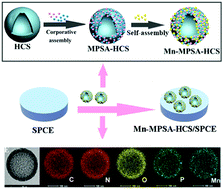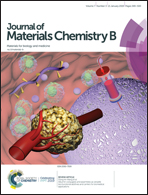Carbon-mediated synthesis of shape-controllable manganese phosphate as nanozymes for modulation of superoxide anions in HeLa cells†
Abstract
Transition metal phosphates have shown great potential as nanozymes for selective detection of reactive oxygen species (ROS), but its application has been hindered by the complicated synthesis and difficulty in shape and size control. Herein, we present a facile method to fabricate transition metal phosphates by using hollow carbon structures as substrates. Manganese phosphate is a typical Nanozyme used in this design and the shape and size of the Mnx(PO4)y layer can be efficiently controlled by altering the carbon substrates. Characterization demonstrated that Mnx(PO4)y layer modified hollow carbon sphere (Mn-MPSA-HCS) and hollow carbon cubic (Mn-MPSA-HCC) were successfully prepared and used as nanozymes for superoxide detection. The established electrochemical sensor was employed in the online monitoring of drug stimulated superoxide anions released from cancer cells. This method can be adapted as a general way to prepare transition metal phosphate layers with various controllable shapes and sizes as nanozymes for different uses in the future.



 Please wait while we load your content...
Please wait while we load your content...